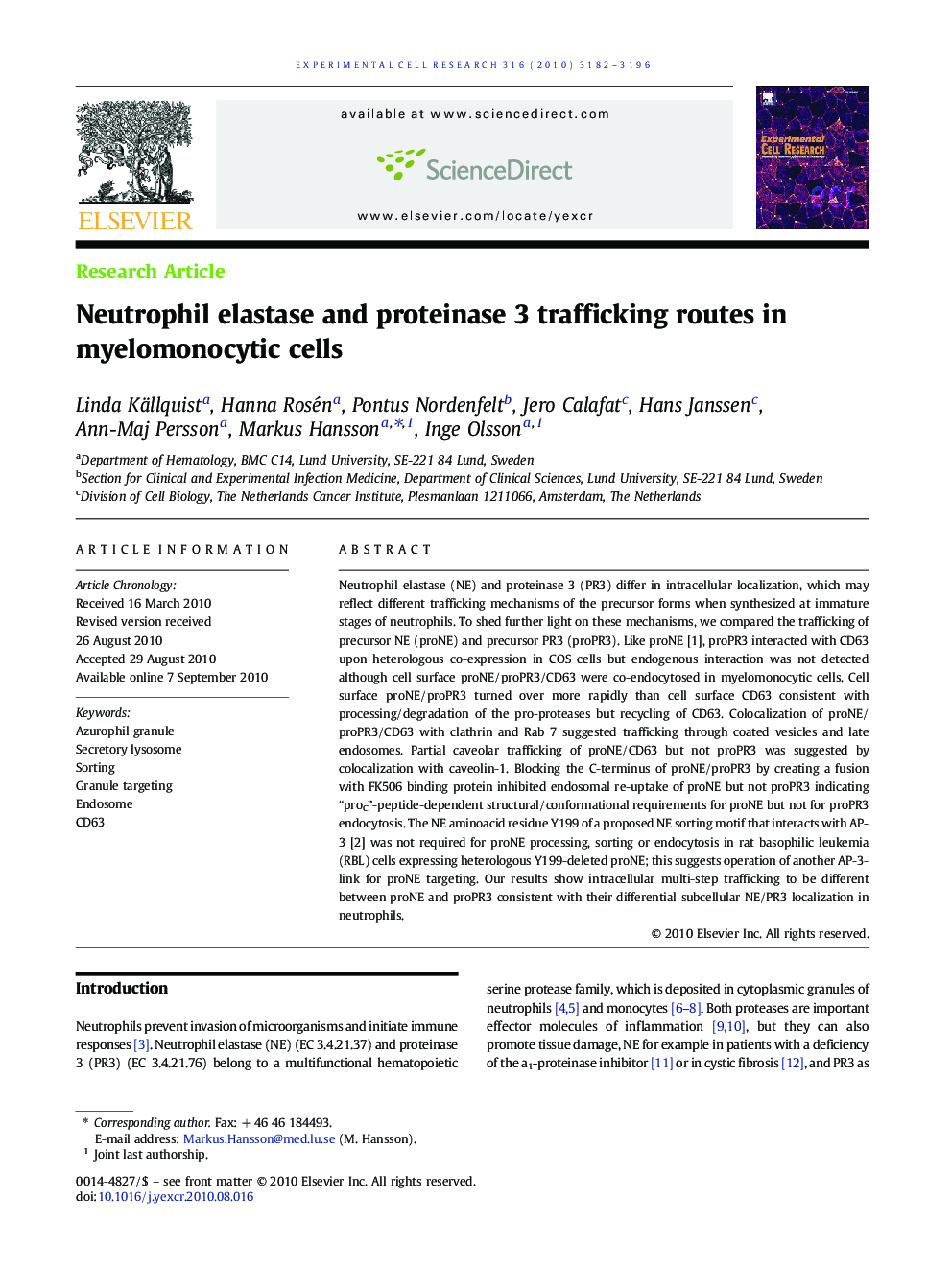| Article ID | Journal | Published Year | Pages | File Type |
|---|---|---|---|---|
| 2131008 | Experimental Cell Research | 2010 | 15 Pages |
Neutrophil elastase (NE) and proteinase 3 (PR3) differ in intracellular localization, which may reflect different trafficking mechanisms of the precursor forms when synthesized at immature stages of neutrophils. To shed further light on these mechanisms, we compared the trafficking of precursor NE (proNE) and precursor PR3 (proPR3). Like proNE [1], proPR3 interacted with CD63 upon heterologous co-expression in COS cells but endogenous interaction was not detected although cell surface proNE/proPR3/CD63 were co-endocytosed in myelomonocytic cells. Cell surface proNE/proPR3 turned over more rapidly than cell surface CD63 consistent with processing/degradation of the pro-proteases but recycling of CD63. Colocalization of proNE/proPR3/CD63 with clathrin and Rab 7 suggested trafficking through coated vesicles and late endosomes. Partial caveolar trafficking of proNE/CD63 but not proPR3 was suggested by colocalization with caveolin-1. Blocking the C-terminus of proNE/proPR3 by creating a fusion with FK506 binding protein inhibited endosomal re-uptake of proNE but not proPR3 indicating “proC”-peptide-dependent structural/conformational requirements for proNE but not for proPR3 endocytosis. The NE aminoacid residue Y199 of a proposed NE sorting motif that interacts with AP-3 [2] was not required for proNE processing, sorting or endocytosis in rat basophilic leukemia (RBL) cells expressing heterologous Y199-deleted proNE; this suggests operation of another AP-3-link for proNE targeting. Our results show intracellular multi-step trafficking to be different between proNE and proPR3 consistent with their differential subcellular NE/PR3 localization in neutrophils.
